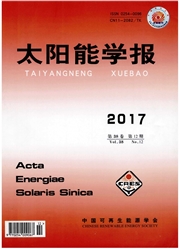

 中文摘要:
中文摘要:
该文就其微型化可能产生的一系列问题,如:输出频率过高、产生转矩过小、冷热端差过小等进行了分析。提出自由活塞式斯特林发动机比热声式更具微型化的优势。并对一台长12cm、直径2.5cm的小型活塞式斯特林发动机进行了实验。实验中发动机热端温度范围64~626℃,通过测量其外壁面温度和声信号随时问的变化,得到发动机的稳定性和输出功率随外加热功率变化规律。该发动机的理论最高功率密度为102kW/m^3。
 英文摘要:
英文摘要:
Stirling engine with advantages of simplicity and high efficiency has feasibility to combine with micro combustor as MEMS energy source. The problems of micro stirling engine, such as high frequency, low torque and low terminal temperature difference were analyzd in the paper, and it is found that the free piston stifling engine is more suitable for micromation than thermal acoustic stifling engine. A mini stifling engine with length of 12cm, diameter of 2.5cm was tested in the experiment. The hot terminal temperature was adjusted form 64 to 626℃ and its extemal wall temperature and acoustic signal were measured to study its scheme of stability and power output with different external heat supply. The highest theoretical power density of the engine is 102kW/m^3.
 同期刊论文项目
同期刊论文项目
 同项目期刊论文
同项目期刊论文
 期刊信息
期刊信息
